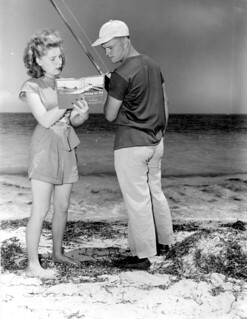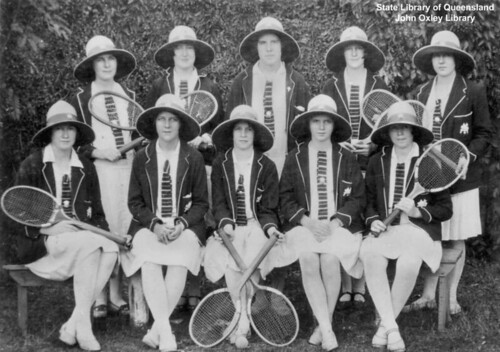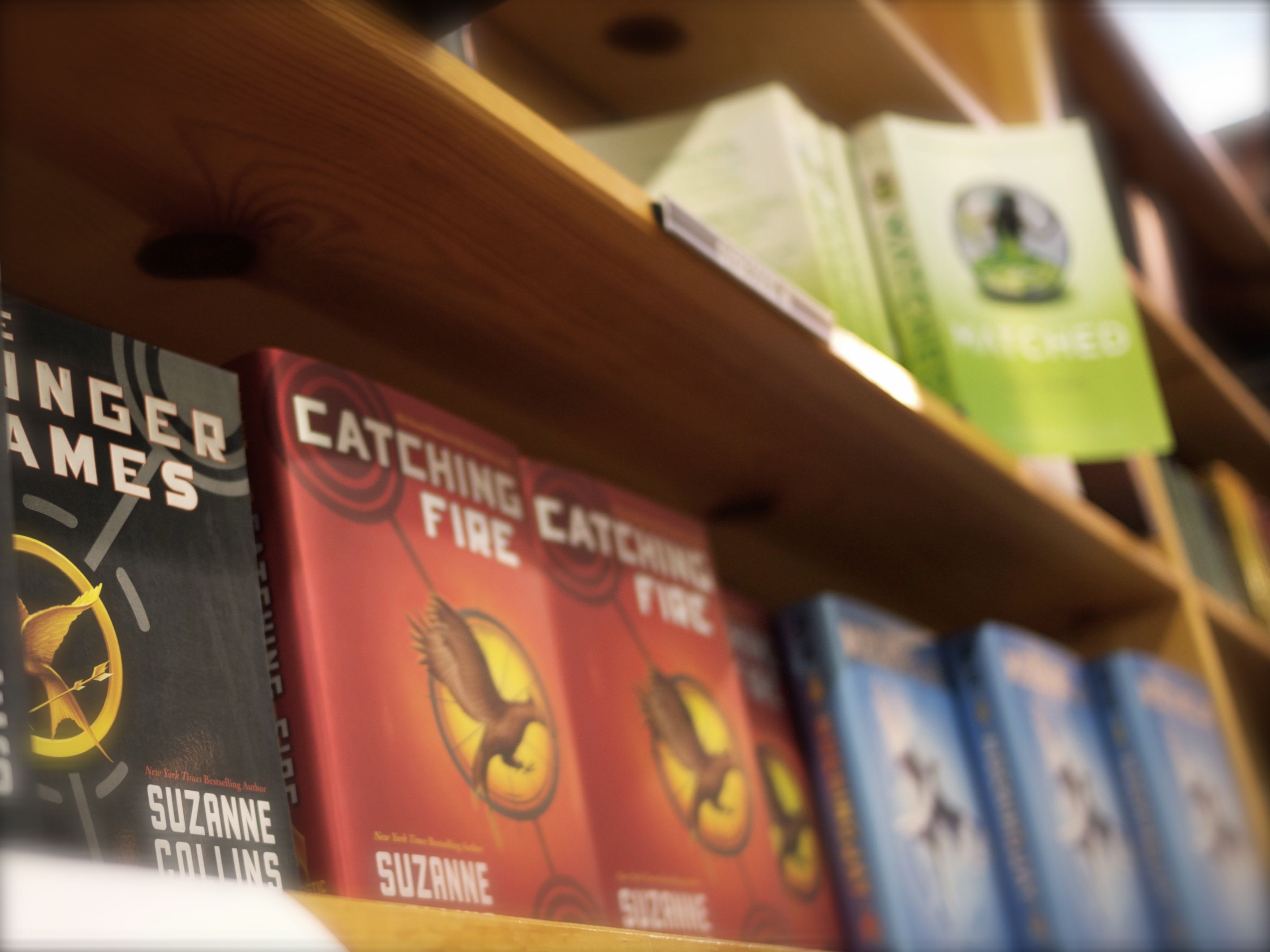Instead of defending romance books to those who’ve never read one, I’d like to say this instead: grow up. The categorical dismissal of the most-read genre in the world reveals ignorance, not intellectual superiority. This is a billion-dollar industry, and it’s not built on vapidity and cliché. It exists and thrives because romance authors offer readers an emotional experience that mirrors an elemental desire in life: to find a constant and loving companion; to become our best selves; to forgive our mistakes of the past and learn from them.
All in In the News
Links & Things: Angry Girls, Feminism, Diversity & More Cheapo Books
I'm back with another semi-regular roundup of interestingness on the web. Make sure to scroll down for some good deals on good books I've found for y'all.
Required Reading
Blogger Reynje wrote the best review of Elizabeth Scott's brilliant Heartbeat and digs into who much some readers have hated the main character.
If Emma’s character is divisive then I’m stating right now that I’m firmly on her side. I want to see more of this: more honesty, more difficulty, more discomfort. Sometimes teenage girls are angry, or sad, or complicated. And that’s okay.
Links & Things: It's Been Awhile Edition
I haven't posted my link roundups in quite some time and there's a reason for that. I've had a problem with those posts being lifted verbatim or nearly-verbatim and re-published. This has, understandably, been pretty upsetting, so I stepped back from compiling them until I could figure out a way to still share but mitigate the chances of that happening.
Unfortunately, I don't have an answer for that, but I'm hoping that by diversifying my linkage content, it'll be less-appealing to folks who don't understand attribution and plagiarism. *cross fingers*
Reportage: ALA Midwinter Meeting 2013
Laura, Sandra and I headed up to Seattle on Saturday to check out the exhibits at the American Library Association's Midwinter Meeting.
This is a large conference and trade event for the library profession. I also saw a number of people with identification indicating that they were teachers or educators, authors, agents and, of course, bloggers (I didn't see as many as I expected, however--I suspect the smaller midwinter meeting doesn't attract as many people who travel just for exhibits). The Big Six publishers all have a presence, as do many of the smaller ones, such as Algonquin, Soho and a number of independents I wasn't familiar with. Notably missing was the Harlequin empire, which I understand only exhibits at the major ALA conference in the summer.
Here's a roundup of some observations from ALA--this is by no means exhaustive, as I was only able to spend a day and didn't attend any of the social activities. (Though we did get to hang out with Mindi for half a day, which is more awesome than any of the organized meet-ups.)
The vast majority of the books showcased were young adult and younger titles. We intentionally went on the "spotlight on adult fiction" day so we could see a diversity, but with the exception of some literary and women's fiction and a few key imprints or publishers, most were targeted at younger readers. I heard a number of librarians complain about this to exhibitors, which I though was interesting gossip. I was pretty disappointed that several publishers didn't even have their adult fiction catalogs available. I was also their wearing my educator hat, and was seeking non-fiction I could use in my communications classes, but only Wiley had much in the way of academic titles featured.
I was pretty shocked at how little romance was being promoted, since I know that it's the most popular genre and that libraries carry romance pretty heavily. I assume more of this is showcased to librarians at their larger annual meeting. Even in the YA exhibits, it definitely skewed toward the fantasy/science fiction/historical fantasy realm (fans of YA fantasy should be very, very happy this spring and summer) or Issue Books (eating disorders, cutting, incest).
WTF: GQ's "Reading Man's Guide to Dirty Books"
 [Hey, Mom, you don’t need to read this piece, okay?]
[Hey, Mom, you don’t need to read this piece, okay?]
The latest installment in the continuing chronicles of, “OMIGOD! Women are reading about S-E-X! The end of the world is nigh!” comes from in the form of GQ’s unfortunate (print-only) article by Tom Bissell, “A Reading Man’s Guide to Dirty Books.”
Bissell, identified by the magazine as a “connoisseur of the finest literary smut” (he’s actually a professor at Portland State and an expert in video games*), argues,
“The best way to seduce an intelligent woman? It’s shockingly simple, really. Read to her.”
Because, obviously, if the men in intelligent women’s lives aren’t selecting dirty books that said men will then read aloud to their lady friends, those women may make “bad” choices in “trashy” reading materials and who knows what might happen?
Oh, noes! Women may even read “trashy” novels written by women, which chronicle the female experience with a healthy, sex-positive, point-of-view on women’s sexuality. Gasp!
Sarcasm aside, I think it’s interesting that Bissell advocates removing women from the equation and men literally reading to them “erotic” books written by men (and I’d argue for men) so they can understand and apparently be titillated by sex through the male gaze.
Bissell points specifically and banally to the Fifty Shades of Grey craze as a problematic sex-filled read (apparently, according to Bissell, there is a veritable a “litter” of sequels, not just two—someone tell E.L. James), arguing that the women of the world are picking up these novels for one (extremely sexist) reason.
“It was then I realized why women across the Western world were firing up their vibrators at the thought of Christian Grey flogging the imbecilic Anastasia Steele. The story was the wand by which E.L. James had transformed the realm’s every mom-jeaned frump into a preciously violated princess. You could argue that we see the male equivalent of this dynamic all the time in sitcoms wherein the pudgy dork cohabits with the curiously hot young wife. The crucial difference is we don’t masturbate to sit-coms.”
I know, y’all, I know.
Let’s get this straight:
- Women only read Fifty Shades of Grey as masturbatory fodder;
- Women read Fifty Shades of Grey because it fulfills their frumpy “mom-jeaned” fantasy that they obviously couldn’t achieve in their own lives due to the whole “mom jeans” issue; and
- This is what Bissell chooses to tell the 75% male readership of GQ about women and their erotic reading “needs.”
Obviously, Bissell is Extremely Alarmed.
The "New Adult" Category: Thoughts + Questions
Nearly every week this summer we saw news of a self-published author’s “new adult” novel’s acquisition and reissue by a mainstream publisher, setting off a flurry of speculation that “new adult” is the next big thing. This was further bolstered by three digital-first imprints or publishers putting out the call for submissions in this category.
Significant publishing deals and emerging publishers seeking out “new adult” titles aside, I’m not entirely sure that it really is the next big thing—or that an entirely new category is even necessary.
The term “new adult” first emerged in 2009 when St. Martin’s Press hosted a contest searching for manuscripts featuring protagonists in the 18 to mid-twenties age range. It was touted as,
…fiction similar to YA that can be published and marketed as adult—a sort of an “older YA” or “new adult.”
In essence, it was a response to the phenomenon of adults reading teen fiction and a search for a method to best capitalize on that audience that discovered young adult fiction. Ultimately, St. Martin’s declined to acquire any of the manuscripts they received as part of the contest; two finalists were later acquired by other publishers in the young adult category (Girl of Fire and Thorns and The Treachery of Beautiful Things).
Fast-forward three years (and I think this timing is significant), ebooks have gained meaningful marketshare—14 percent of units sold in 2011 versus four percent in 2010 (with genre fiction, notably romance, often exceeding the average) and self-publishing has become more normalized. Books like Easy (which I recommend), Slammed, Beautiful Disaster and Flat-Out Love are self-publishing “new adult” success stories, and are all now published by traditional publishers. Each of these books tells a story of an older teen and are considered “edgier” that typical YA fare (I do not agree with this assessment, however—there’s a wide range of edginess in the teen market).
All signs point to “new adult” becoming a full-fledged fiction category, right?
Well, I don’t know. But, I have some questions.
Thoughts About That YA Book Buying Study

A lot of fuss has, understandably, been made over Bowker’s study about book buying trends in the young adult/teen category, Understanding the Children’s Book Consumer in the Digital Age.
People seem to find the data surprising or somehow a sign of something signficiant (I’m looking at you, Atlantic Wire aka Sarah’s Daily Annoyance), but I’m not so sure.
Most of us only have access to the report summary (hey, if someone wants to hook a girl up with the very pricey full report, I’d love to analyze it further, I kind of know my stuff re: data anaylsis*) and that summary makes two interesting points.
- 55 percent of buyers of books in the teen/YA category are adults (note: this does not say books, it says “buyers”); and
- Adult YA book purchases represent 28 percent of all actual teen/YA books sold.
Now, a lot of people have jumped on this (quite a few negatively so) 55 percent number as very significant. And, a number of high profile media outlets have confused buyers versus books sold. Hence, somehow, the inaccurate statement that adults buy the majority of YA titles has emerged, which is wholly incorrect. Teens are still buying far more young adult books that adults do, representing 72 percent of YA books sold. Basically, teens buy more YA books, per person, than adults, despite being a smaller percentage of the actual buyers of YA books.
On Niceties and Negativity
 Who doesn’t love random cute dog photos? This is one of my dogs, Ruairi (Rory) Boy.
Who doesn’t love random cute dog photos? This is one of my dogs, Ruairi (Rory) Boy.
One of the most inexplicable things I read last week (and there were a lot of them) was Jacob Silverman’s critique of readers and writers in Slate, in which he claims that both groups are far too nice online, and makes a rather bizarre argument against enthusiasm.
Whereas critics once performed one role in print and another in life—Rebecca West could savage someone’s book in the morning and dine with him in the evening—social media has collapsed these barriers. Moreover, social media’s centrifugal forces of approbation—retweets, likes, favorites, and the self-consciousness that accompanies each public utterance—make any critique stick out sorely.
Is this Silverman’s backdoor method of slamming amateur reviews such as myself who enthusiastically evangelize about books we believe in? Is it just another example of the literary establishment being threatened by regular ol’ readers’ influence? Perhaps it’s push-back against a publishing climate which requires that authors self-promote and engage (gasp!) directly with readers? Does he have a problem with the success of so many female authors via social media?
I won’t speculate as to the motivation behind this anti-enthusiasm manifesto, but for me as a reader, all of those messages ring loud and clear as the real root of Silverman’s piece. But mostly, I am very bothered by the following premises of his argument:
- That readers and reviewers online are expected to only be cheerleaders of books and authors; and
- That we need more negativity.
I am also extremely troubled by two other points in Silverman’s piece that aren’t as overt:
- That this culture of niceness is women’s fault; and
- That negative opinions are somehow more “true” than positive ones.
There’s something to be said for being nice.
Are you reading YA?
An Easy Guide to YA Book Identification
Around the ol’ interwebs, there seems to be some confusion about what “YA” is and what books fit into this category.
To clarify quickly, it does not stand for “Young Age” nor does it stand for “Yeah, Anything.” It stands for “Young Adult,” meaning—loosely—“teen.”
It is a book category (not a genre, which is another one of my linguistic bugaboos) with an teenage audience in mind. It is not a reading level.
These mis-categorizations never cease to annoy me. I think it has to do with that it symbolizes some adults’ insistence on invalidating the entire teenage experience. Instead of pointing to legitimately young adult/teen titles, they look at nostalgically on books they loved as children, or point to books written for adults that see teens through the lens of the adult experience.
The teen years are very important in the path to becoming an adult, and by disregarding books that depict that experience, adults are saying something, aren’t they?
Here are my quick tips for identifying if a book is a young adult title.
 NOT YA. The title should’ve been the tell. Or possibly the mention of life as a third grader.
NOT YA. The title should’ve been the tell. Or possibly the mention of life as a third grader.
Is the book shelved as a “chapter book”? Then, no, you are not reading YA.
Most bookstores and libraries have sections labeled “Chapter Books” or “Juvenile Fiction.” If you are in this section, you are not reading YA. And yet, this continues to confuse many, many people. The Atlantic’s book coverage is so absurd that I’ve largely stopped paying attention to it, but everytime that outlet mentions YA, the amount of wrongness invariably makes me laugh out loud. But they are one of the worst offenders of this. They included Ramona Quimby, Age 8 (age 8, people—that should’ve been the first clue), Harriet the Spy (WTF, just WTF) and Little House on the Prairie as book featuring their favorite girl characters from from YA literature. No, just no.
 Like I said, YA stands for “Young Adult,” not “Young Age.”
Like I said, YA stands for “Young Adult,” not “Young Age.”
Was it on your third grade reading list? Nope, you’re not reading YA.
Yes, Flavorwire, I’m talking about you. Good grief.
Why do we read?
I’ve been thinking about this question a lot. Actually, I’ve been thinking about this question since April, when the Pew Center released their study on the reading habits of Americans.
Unsurprisingly, the data revealed that people read… wait for it…
A lot of different reasons.
Take a moment to recover from the shock of that astonishing information.
Here’s a snippet from the results (it’s really worth reading through the study, if this sort of thing interests you):
- 26% of those who had read a book in the past 12 months said that what they enjoyed most was learning, gaining knowledge, and discovering information.
- 15% cited the pleasures of escaping reality, becoming immersed in another world, and the enjoyment they got from using their imaginations.
- 12% said they liked the entertainment value of reading, the drama of good stories, the suspense of watching a good plot unfold.
- 12% said they enjoyed relaxing while reading and having quiet time.
- 6% liked the variety of topics they could access via reading and how they could find books that particularly interested them.
- 4% said they enjoy finding spiritual enrichment through reading and expanding their worldview.
- 3% said they like being mentally challenged by books.
- 2% cited the physical properties of books – their feel and smell – as a primary pleasure. Source Link
For me, all but the last item (books’ physicality) are true. Often when I read, I find that my world expands, that I learn something new, maybe about a place, perhaps about my own thinking. I love the drama of a good book, of a beautifully constructed plot, of carefully crafted words. Reading, as I’ve mentioned a time or twelve, is also my favorite way to unwind and decompress—it’s a lifelong habit of mine to read for an hour or two before bed or when I take a lunch break.
I’d also add to that list that I love the community of readers, which was even true before the internet became such an awesome book talk water cooler. Even as a kid, passing around good books and chatting about them, was a joy. Now, I love discussing about books here on CEFS, at my book club meetings (hi ladies!), on Twitter, on Goodreads and at Costco (this keeps happening to me for some reason).
But what I’m most interested from this data is the idea of reading being “challenging.”
 Oh, hi there, ASkars. via EWI have a confession: I am an avid reader of Entertainment Weekly.
Oh, hi there, ASkars. via EWI have a confession: I am an avid reader of Entertainment Weekly.
I love EW. So much so that I am perpetually mad at my letter carrier for delivering it several days late. (I’m convinced he’s reading it in his postal truck.)
Love. It.
Honestly, most of the time I don’t know who the hell they’re talking about, but there’s something delightful ridiculous about the whole magazine. However, in the midst of all the ridiculousness, there’s actually a pretty decent book section. I know, right? Who knew? Stephen Lee is pretty knowledgeable about young adult novels in particular, and I usually really enjoy his pieces in the magazine and on the EW blog.
However, as a paged through last week’s issue, I was disheartened to read some pretty disappointing comments about young adult fiction in a short feature (not available online, sorry) about authors that usually write in the adult category making the move to YA. There were several comments with the undertone that YA literature is “easier” or less sophisticated, but the one that really struck me was from Elizabeth George, who said,
My adult novels, plot-wise and linguistically, are very complicated. I had to alter that and create a much more straightforward way of telling my story.
—Elizabeth George in Entertainment Weekly
Excuse me?!
I have a confession: I have never, ever felt guilty about reading.
Clearly, I’m doing something wrong.
Why? Because as summer reading season heats up, more and more book sections of magazines, newspapers (yep, they still exist… sort of) and online media are proclaiming that now is the time to read those “guilty pleasure” books. It’s made even worse this year since every journalist with access to Google has written some variation of a ridiculous, alarmist piece about Fifty Shades of Grey.
Take this random “observation” from Michael S. Rosenwald this week in the Washington Post,
There are no book covers on e-readers, meaning you can read all the steamy sex you want and tell your friends that you’re reading the new Robert Caro. This is one of the key advantages to e-readers — lying about your reading habits — and it probably helps explain why guilty-pleasure fiction is the most popular genre of reading on e-readers, according to the Book Industry Study Group. (I had to ask my wife last month whether she was reading “Fifty Shades of Grey” on her e-reader. Yes, she was.)
Let me get this right… ereaders are popular because because it’s easy for readers to lie about what they like to read?
Um, no.
 {via State Library and Archives of Florida}
{via State Library and Archives of Florida}
Sometimes I feel like I’m living in a parallel digital universe, completely counter to the mainstream.
From friends being horrified by the concept of my devoting time to something as “weird” as blogging or Twitter, to proclamations from mainstream publications bemoaning that ebooks are ruining—ruining—our civilization, it’s bizarre that being involved in the digital world is still perceived by a lot of people as a fringe activity.
In that vein, The Atlantic recently turned its critique of digital culture to the rise of online book reviews in the article, Could the internet save book reviews?”*
In theory, customer reviews are quick, easy, egalitarian, and make the “consumer” (as opposed to the reader) feel in control of his or her reading choices. But there’s a difference between a recommendation and a review. Customer reviews are heavy on opinion and light on insight. They’re reactionary. Fiction customer reviews typically contain “I-loved-it” or “I-hated-it” declarations based on an affinity for or dislike of the characters and discuss them as if they were real people. Customer reviews rarely include plot summaries—even dull ones. They tend to consider books in terms of whether or not they were worth the money and need not pertain to the book at all.
Generalize much?
In a blatant (and successful) attempt at link-baiting, the New York Time published an opinion piece on their website last week about how adults shouldn’t be reading young adult fiction.
Cue the eye rolls.
(No, I won’t link to the article, you can find it if you Google “Joel Stein is a Sexist Ass.”) I’m not going to add to the commentary about how this is an absurd assertion, because loads of people have already done that extremely well, but I am going to ask another question,
Why the HELL do we even care what people do or do not read?
Seriously. Why is this important to so many people? It seems that at least once a month, there’s some new article (50 percent of which feature Jonathan Franzen bloviating about his supposed superiority) asserting that we should read X, that we should not read Y and that “serious readers*” would most definitely should not read Z.
If you’ve been reading this blog, you have probably figured out that my reading tastes are all over the place. But, I have a particular enjoyment of the following:
- Contemporary, realistic YA;
- Creative, entertaining urban fantasy;
- Urban crime fiction;
- Post-apocalyptic/dystopian (adult or YA)
- Books involving prank wars;
- Smart contemporary romance (a la Julie James and Shannon Stacey);
- Novels involving zombies;
- Novels involving werewolves;
- Middle Eastern women’s fiction;
- Graphic novel/fiction with visual elements;
- Funny memoirs;
- Sweet and fun contemporary YA (a la Stephanie Perkins);
- Books involving heists and/or capers; and
- Books that don’t suck (to me).














